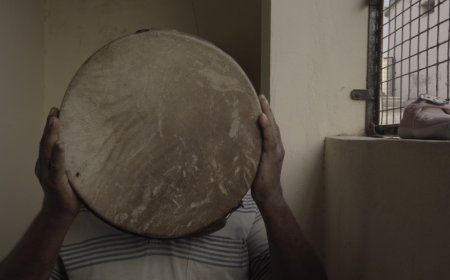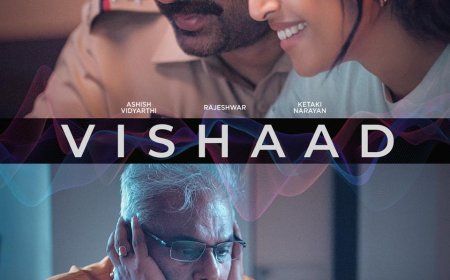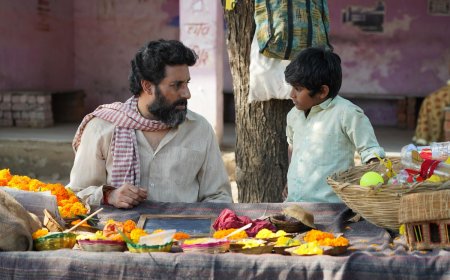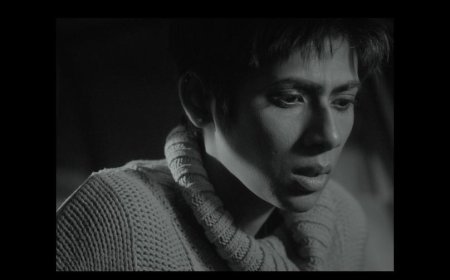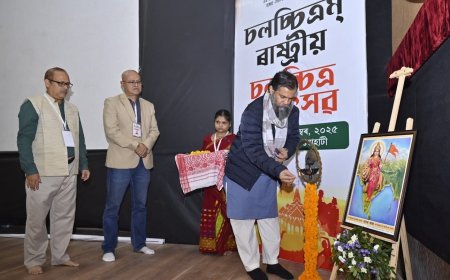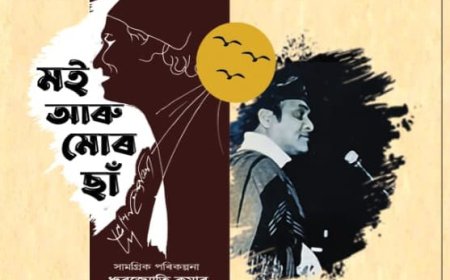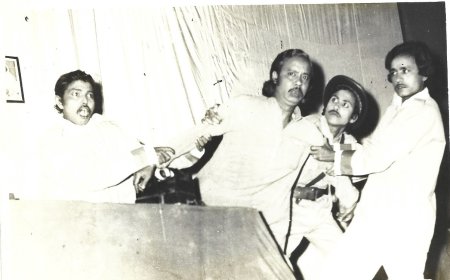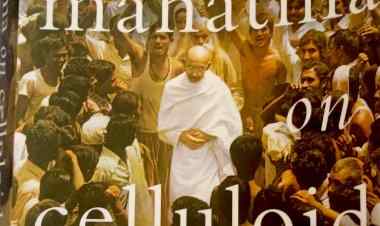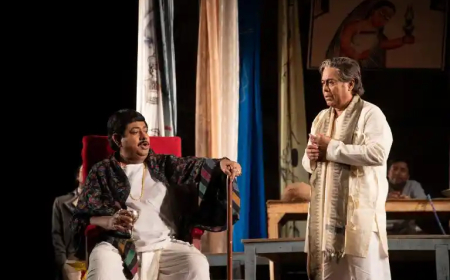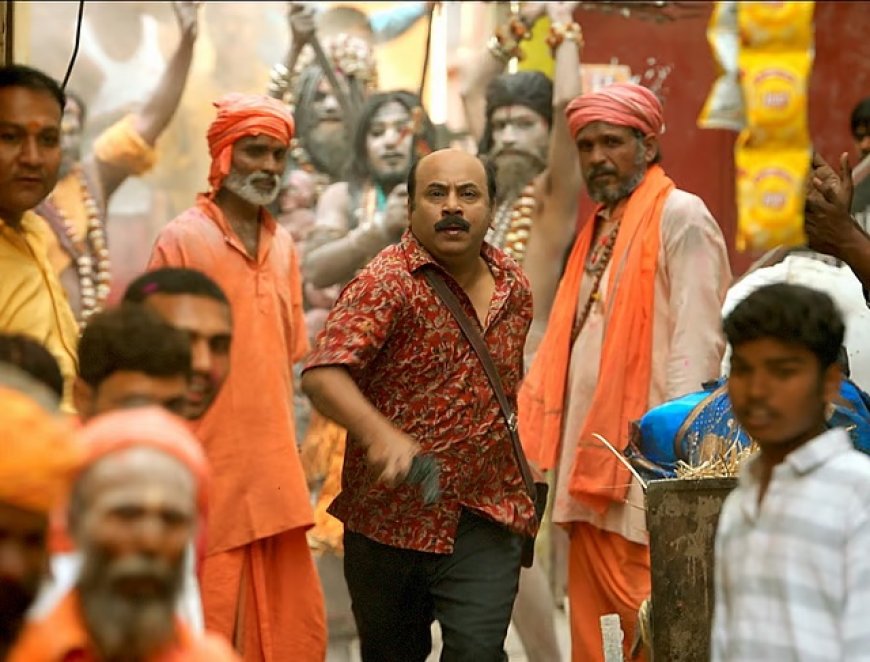Saswata Guha writes Film Review of The Eken: Benaras e Bibhishika
Shaswata Guha provides a critical and in-depth analysis of the 2025 film directed by Joydeep Mukherjee, situating it within the evolving landscape of Bengali popular cinema. The essay examines the film's unique blending of comedy and crime thriller tropes, its use of Benaras as both a narrative setting and cultural metaphor, and the sociopolitical undertones embedded within its deceptively light-hearted framework.
Mystery, Mirth, and the Sacred City: Film Review of The Eken: Benaras e Bibhishika (2025)
The 2025 film The Eken: Benaras e Bibhishika, directed by Joydeep Mukherjee, is the third installment in the cinematic adaptations of Sujan Dasgupta’s Eken Babu detective stories. Featuring Anirban Chakrabarti as the titular sleuth, the film brings its characteristic light-hearted tone to a plot that explores deeper themes of terrorism, cultural heritage, and identity, set against the vibrant, spiritual backdrop of Benaras (Varanasi).
Introduction: The Curious Case of Eken Babu’s Popularity
Detective fiction has long been a beloved genre in Bengali literature and cinema—from Byomkesh Bakshi and Feluda to lesser-known but equally engaging sleuths like Mitin Mashi and Kakababu. Among them, Eken Babu stands out for his self-aware absurdity. Far from the brooding brilliance of his more seriouscounterparts, Eken Babu is portly, comical, and deliberately unheroic. Yet, within his bumbling demeanor lies a sharp intellect and a deep moral compass. With the success of the earlier films (The Eken and The Eken: Ruddhaswas Rajasthan), Joydeep Mukherjee’s 2025 installment shifts the geographical canvas to Benaras, signaling a thematic and aesthetic expansion.
Benaras: Character, Metaphor, and Milieu
Benaras is not just a setting in the film; it functions as a living, breathing entity that influences the plot and characters. Known as the spiritual epicenter of India, the city invokes death and rebirth in the same breath, qualities that resonate symbolically with the film’s central mystery involving a potentially deadly terrorist plot. Cinematographer Ramyadip Saha captures the city with a painterly eye: morning mist on the ghats, saffron-clad sadhus, flickering oil lamps, and the cacophony of pilgrims. These visual choices are not merely ornamental but serve to contrast the serenity of the spiritual with the volatility of human evil.
The city’s duality, sacred yet profane, timeless yet decaying, mirrors the layered nature of the narrative. The juxtaposition of holy rituals with clandestine activities builds a powerful tension. In effect, Benaras functions as both a sanctuary and a battlefield. As viewers, we are invited to question: Can a city of salvation shield itself from the corruption of modern terror?
Narrative Architecture and Genre Interplay:
Structurally, the film adheres to the classic detective plotline: an initial incident, rising complications, red herrings, climactic revelation, and resolution. However, what sets Benaras e Bibhishika apart is its hybrid tone. Joydeep Mukherjee crafts a narrative that is part travelogue, part political thriller, and part comedy. This tonal ambiguity might unsettle viewers expecting a conventional whodunit, but it also reflects the postmodern tendency in contemporary Bengali cinema to blur genre boundaries.
The film opens with the trio, Eken, Bapi, and Pramathaarriving in Benaras under the pretense of a vacation. Soon they reunite with their old friend Subimal (played by Gaurav Chakrabarty), whose ailing uncle Bireshwar (Debesh Chattopadhyay) and aunt Damini (Ishaa Saha) are embroiled in a mystery involving a stolen pendant. What begins as a domestic intrigue spirals into a national security crisis involving coded messages and sleeper cells.
Mukherjee sustains tension without sacrificing the comic flair, a balancing act achieved through tightly-written dialogues and Anirban Chakrabarti’s performance. Eken’s love for bad jokes, “terrible PJs” as they’re knownoffers comedic relief that doesn’t trivialize the stakes. In fact, his humor often conceals insightful deductions, echoing the literary tradition of the "holy fool" whose eccentricity is a form of genius.
The Politics of Fear: Terrorism and the Urban Imaginary
One of the boldest moves of Benaras e Bibhishika is its decision to tackle terrorism, a theme rarely explored in Bengali detective films. While Byomkesh has dealt with socio-political issues and Feluda has touched upon smuggling and theft in politically charged climates, Eken’s entry into the world of international terror cells is a noticeable narrative shift.
The screenplay delicately navigates this terrain, avoiding jingoistic overtones while still presenting a credible threat. The inclusion of a terrorist plot lends urgency to the film and elevates Eken from a mere comic detective to a figure of national importance. However, the film is careful not to over-sensationalize; its message is subtle. The terror cell is not demonized on religious grounds, a significant departure from certain tropes in mainstream Hindi cinema, but is presented as an amoral entity driven by ideology and greed.
Performances and Character Dynamics:
Anirban Chakrabarti’s portrayal of Eken is by now iconic. He embodies the character with a precise blend of physical comedy and emotional depth. His facial expressions, ranging from childlike wonder to sudden seriousness, anchor the film’s tonal shifts. Chakrabarti brings to life Eken’s peculiar cadence of speech, odd intonations, and his ability to command attention while appearing not to.
Supporting actors Somak Ghosh and Suhotra Mukhopadhyay, as Pramatha and Bapi, lend continuity and camaraderie to the trio. Their interactions feel organic, built over years of shared experiences. Gaurav Chakrabarty as Subimal delivers a grounded performance, while Debesh Chattopadhyay brings a sense of unease and gravity as the ailing Bireshwar.Ishaa Saha’s Damini deserves particular attention. Her character is shrouded in ambiguity, elegant, composed, yet perhaps harboring secrets. She challenges the male gaze often inherent in detective fiction by being neither a damsel in distress nor a femme fatale but someone operating in gray areas. Her performance adds moral complexity to the unfolding events.
Humor as Resistance:
Humor, in this film, functions not merely as entertainment but as resistance. Eken’s humor disarms not just his friends and suspects, but also us as viewers. It allows the film to engage with dark themes, death, betrayal, terrorismwithout descending into despair. In moments where other detectives might react with grim resolve, Eken cracks a pun or munches on laddoos. This is not trivialization but a deeply Bengali strategy of using wit as a coping mechanism, a trait seen in literature from Sukumar Ray to Satyajit Ray.Even in his goofiness, Eken retains a sense of justice and empathy. He might mock the police, ridicule bureaucrats, or feign incompetence, but his ultimate loyalty lies with truth and human dignity.
Aesthetics and Sound Design:
Apart from visuals, the sound design and music by Subhadeep Guha enhance the atmosphere. The film employs minimalistic background music, allowing ambient sounds of the city, bells, chants, conch shellsto seep into the narrative texture. This diegetic sound design reinforces the sense of place.Editing by Sanglap Bhowmick ensures the narrative never lags. Transitions are smooth, with cleverly placed cliffhangers at act-breaks to maintain suspense.
Cultural Implications and Genre Relevance:
Benaras e Bibhishika is a rare film that brings together the cultural richness of a city, the global anxieties of our time, and the comedic cadence of regional storytelling. It reflects a moment in Bengali cinema where filmmakers are daring to reimagine genres, be it horror (Ballabhpurer Roopkotha), meta-narratives (X=Prem), or detective fiction.The film also situates Bengali cinema in a pan-Indian framework. By choosing a non-Bengali city like Benaras as its locale, the film transcends linguistic boundaries and appeals to a broader cultural consciousness. It celebrates the diversity of Indian life while remaining rooted in Bengali aesthetics.
Conclusion: The Whodunit Reimagined
In conclusion, The Eken: Benaras e Bibhishika succeeds on multiple fronts: as a mystery, a travelogue, a socio-political thriller, and a comedy. It showcases the maturing of the Eken franchise from episodic adventures to more layered storytelling. The film honors its literary roots while adapting to contemporary cinematic demands.In an age where detective stories are often grim or overly cerebral, Eken Babu offers a breath of fresh air. He reminds us that intelligence need not be solemn, that justice can wear a smile, and that laughter may be the sharpest tool in the detective’s kit.
What's Your Reaction?







